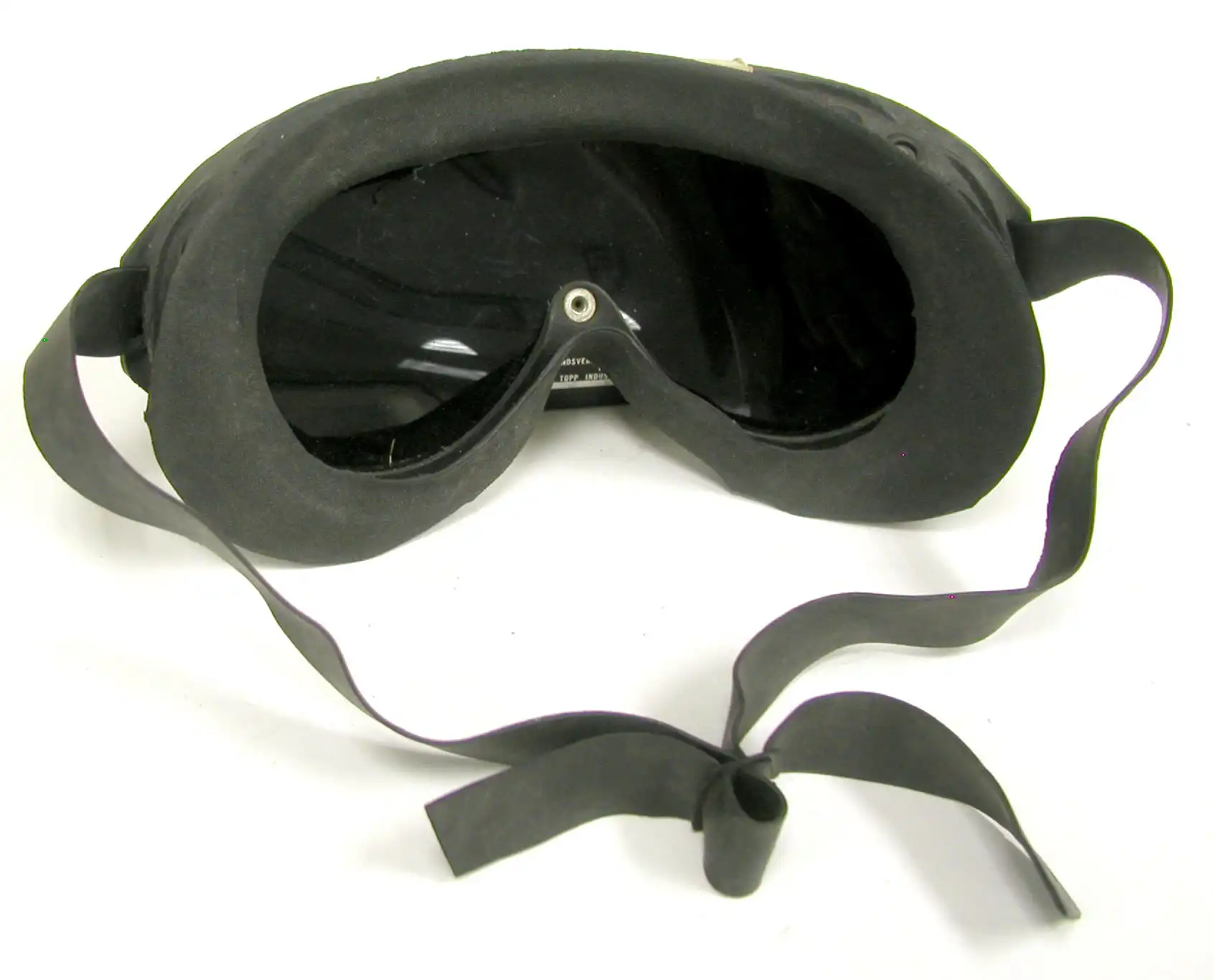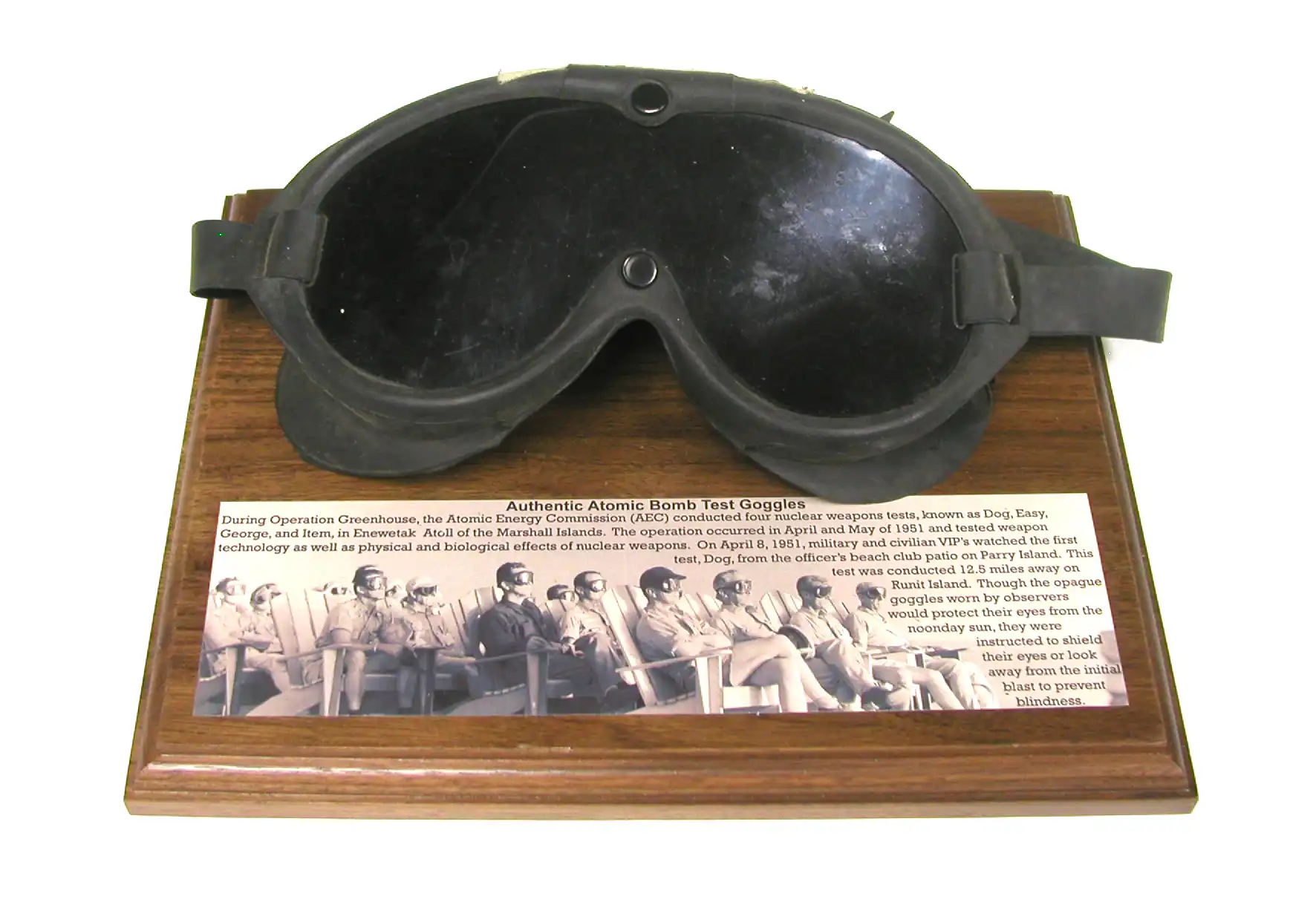One of the eye-catching items in ORAU’s online Museum of Radiation and Radioactivity is a pair of atomic bomb test goggles. [Did you notice what I did there?] Yes, in our collection we house a pair of goggles that someone wore as the United States tested an early nuclear weapon. That’s a pretty cool piece of history, if you ask me. Here are some details behind the goggles.

This pair of atomic bomb goggles can be seen in ORAU’s online Museum of Radiation and Radioactivity.
Where the goggles came from
Dr. Paul Frame, Ph.D., is a retired health physicist and trainer with ORAU. He’s also the curator of ORAU’s online Museum of Radiation and Radioactivity. Dr. Frame acquired these goggles from the National Museum of Nuclear Science and History, a congressionally chartered museum in Albuquerque, New Mexico. It’s unlikely that these goggles can be traced to any specific atomic test, but it’s estimated they were used around 1951 for atmospheric testing. Atmospheric testing means the bomb is detonated in the atmosphere as opposed to under water or underground.
Mystery owner
This pair of goggles came with a strip of cloth tape across the top with the name "RAMSAY" on it. Dr. Frame believes it’s possible that these goggles were used by Norman F. Ramsey who won the 1989 Noble prize in physics. Ramsey played important roles in the development of the atomic bomb, including serving as a group leader at the Los Alamos National Lab during World War II. The goggles spell it "AY" and not "EY," but it’s plausible that it was a misspelling.
The dog photograph
The goggles also came with a famous picture mounted on a plaque. “Operation Greenhouse” involved a series of four atomic tests from April to May in 1951 around the Marshall Islands in the Pacific Ocean. Dr. Frame speculates the image was included in the museum exhibit not only because it’s an incredible picture, but also because it’s focus is on how the goggles were used. In it, the photograph depicts a handful of VIPs wearing safety goggles sitting on Adirondack chairs on the beach. They are illuminated by the flash of detonation. “Dog” was the name of the first test bomb in this series. It was followed by “Easy,” “George,” and “Item.”

The goggles in our collection came with this plaque showing how the goggles would have been used.
Who watched?
Who are the men in the picture? We know that both military and civilians were invited to watch these tests that usually were scheduled in the pre-dawn hours. This beach viewing on Parry Island is located about 12.5 miles from where the test bomb exploded. An atomic mushroom cloud can be seen as far as 100 miles away. Members of all military branches as well as civilians within the Department of Defense, the Atomic Energy Commission (AEC) and contractors were likely in attendance.
How goggles protect
Even with the opaque goggles, bomb test witnesses did not want to stare directly at the explosion. The goggles offered only limited protection from flash blindness. The test viewers were instructed to look away from the initial blast.
Nuclear testing today
Between 1945 and 1962, the AEC conducted 235 atmospheric nuclear weapon tests at sites in the United States and in the Pacific and Atlantic oceans. In 1963, the United States, the United Kingdom and Soviet Union signed the Nuclear Test Ban Treaty prohibiting nuclear weapons tests/explosions in the atmosphere, outer space and underwater. The treaty allowed underground testing if no debris would fall outside the boundaries of the nation conducting the test. The last underground test the U.S. conducted was in 1992.

Image shows how the goggles are displayed in the collection.